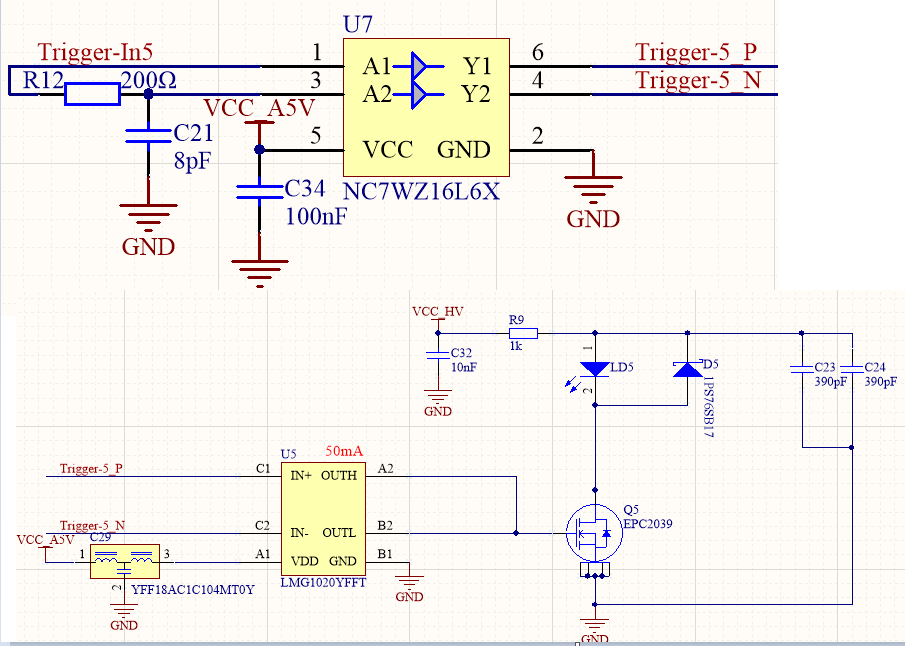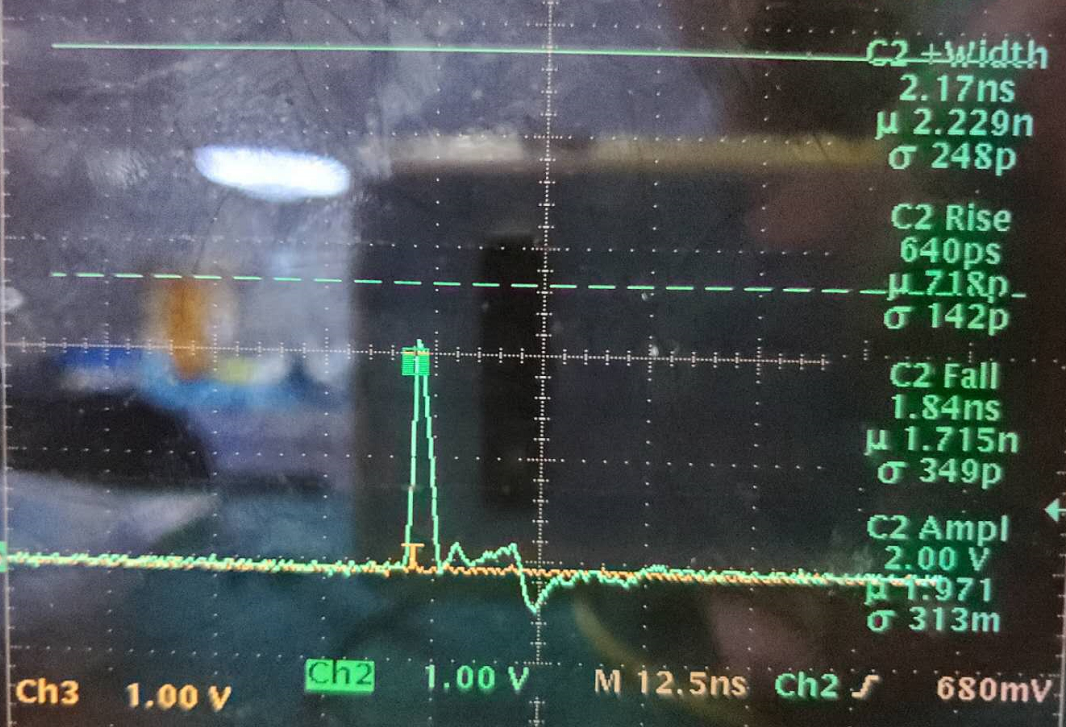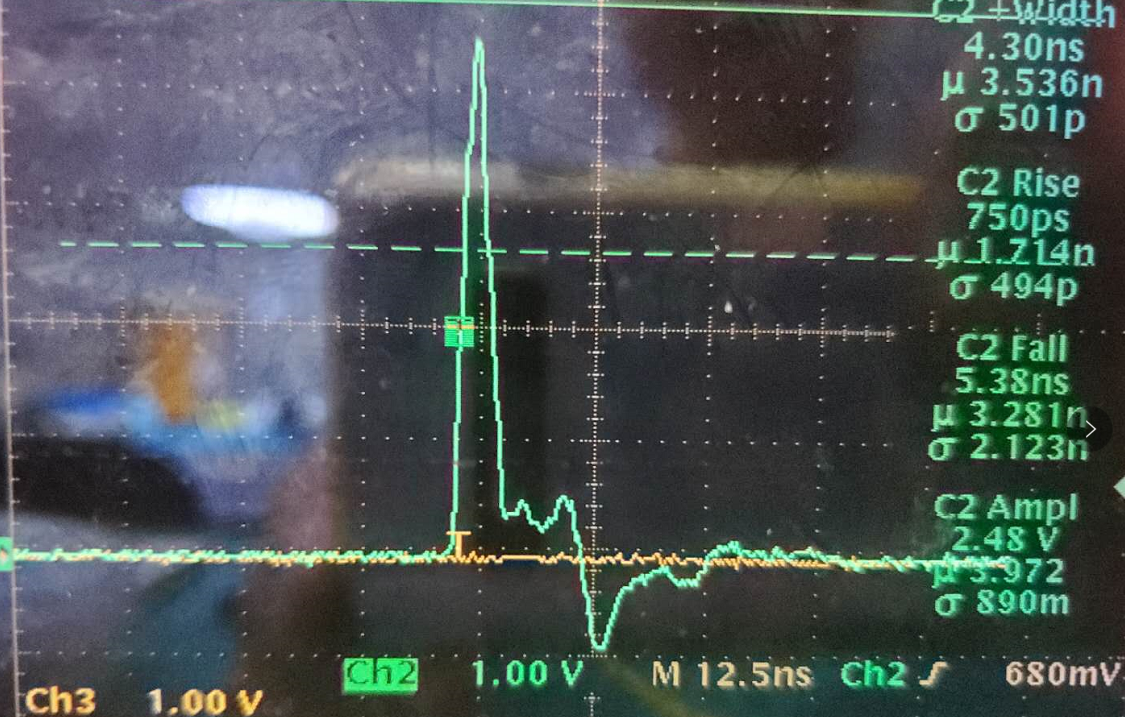Hi Jeffery,
I Ihave encountered the problem that the output amplitude of 1020 is inconsistent with the last time,the schematic is as follows:
I use the RC delay circuit(R12&C21) to generate 2ns narrow pulse input to 1020,but I found four identical circuits, some 1020 output 5v, some 1020 output only 2v, when I change R12 to 220ohm or C21 to 10pF, 1020 output above 4.5v, which makes me very confused, I think that as long as the input of 1020 reaches the input threshold, the output should be 5v. Why does the situation I describe appear? Can you help me confirm what caused it?
Pls look at the picture follows:for the same circuit,the difference between the two pictures is only that the value of C21 is different. The first picture is the output of 1020 at 8pF,the second picture is the output of 1020 at 10pF.





